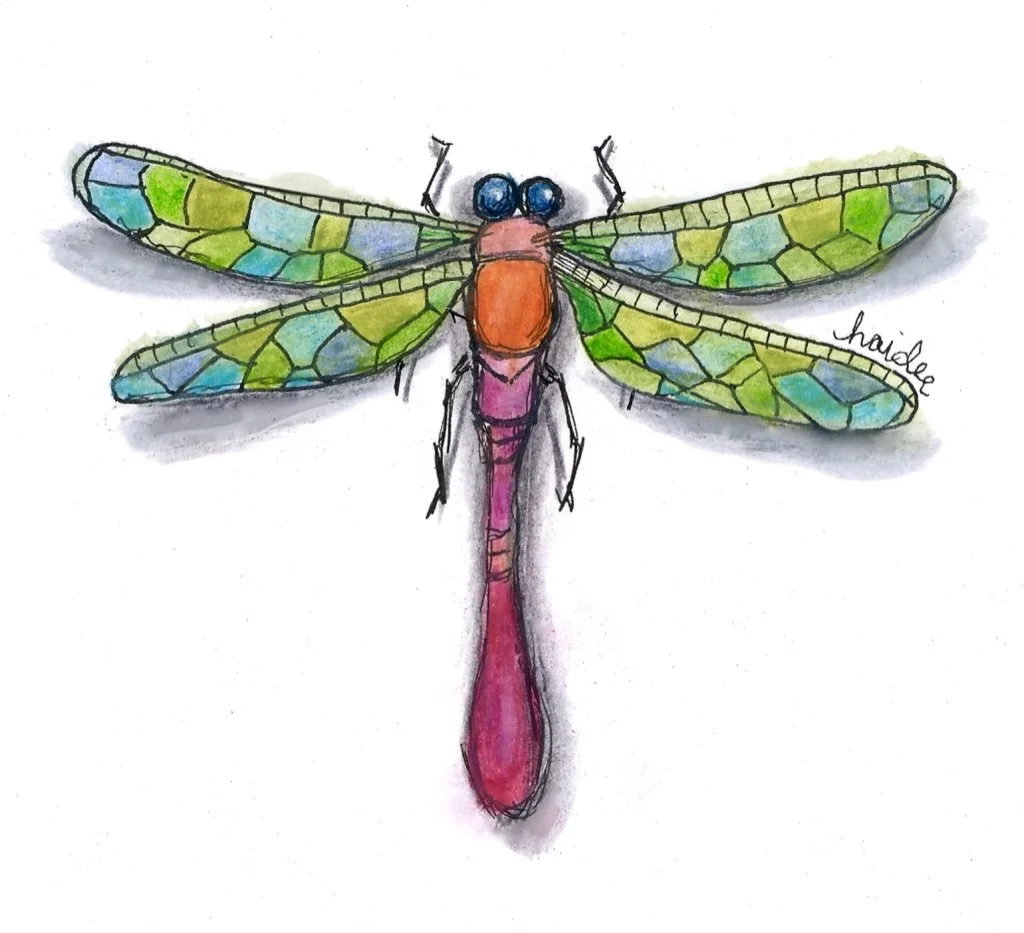 Image 1 of 1
Image 1 of 1


Specimen No. 61. The Bedside Lanternfly
Specimen No. 61
Name: The Bedside Lanternfly | Somnopteris vigilis nocturna
Collected By: Junia Belle, attic naturalist and domestic archivist
Date of Discovery: 14 October 1912
Locality: Third-floor nursery eave, Dinglewood Hall, Shropshire, England
Catalog No. FD - 23 - 61
Field Notes from Junia Belle:
“It was not the scratching under the floorboards that drew me up there, but the light. A curious scatter of green and blue on the ceiling above the child’s crib, like stained glass refracted through water. I found it clinging to the pull string of the lamp, still as sleep itself.”
The Bedside Lanternfly is a rare indoor-dwelling dragonfly, known not for its flight but for its watchfulness. Its delicately veined wings shimmer with fractured patterns in lichen green, coastal jade, and citrine — not quite luminous, but highly reflective, like the interior of an antique kaleidoscope. The thorax is a vivid red-orange, and the long tapered abdomen ends in a plum-stained bulb.
Its presence is most often recorded in quiet domestic spaces — attic bedrooms, reading nooks, and forgotten guest rooms. There, it appears not during the day but in the threshold moments between waking and sleep. According to numerous handwritten testimonies from early 20th-century England, the Lanternfly rests near children’s beds, believed to ward off bad dreams, night tremors, and “underbed disturbances,” as one governess plainly noted.
Curatorial Addendum (Museum of Domestic Entonology, 1935):
Specimen was misfiled for years under “Cracked Window Swimmers,” owing to the mosaic pattern of its wings. Upon re-examination of Junia Belle’s field box — including a series of matchbook sketches — the species was properly renamed and catalogued. No confirmed sightings since 1942, although a letter dated 1971 from a retired teacher in Devon describes “a flickering green mothlike guardian” perched above a reading lamp.
Note: High quality archival glicée print on acid-free paper, a method that creates fine art reproductions with exceptional color accuracy and longevity. Pigments-based inks are designed to resist fading and discoloration and capture the finest details and subtle color variations with great precision.
Housed in a 4×6” crystal-clear acrylic specimen block, its 1” depth allows freestanding display. Each piece is designed to exhibit on desk or shelf..
Fly Design uses a practice known as entonology — the study of fictitious insects — to reimagine the natural world through scientific storytelling and poetic design.
Specimen No. 61
Name: The Bedside Lanternfly | Somnopteris vigilis nocturna
Collected By: Junia Belle, attic naturalist and domestic archivist
Date of Discovery: 14 October 1912
Locality: Third-floor nursery eave, Dinglewood Hall, Shropshire, England
Catalog No. FD - 23 - 61
Field Notes from Junia Belle:
“It was not the scratching under the floorboards that drew me up there, but the light. A curious scatter of green and blue on the ceiling above the child’s crib, like stained glass refracted through water. I found it clinging to the pull string of the lamp, still as sleep itself.”
The Bedside Lanternfly is a rare indoor-dwelling dragonfly, known not for its flight but for its watchfulness. Its delicately veined wings shimmer with fractured patterns in lichen green, coastal jade, and citrine — not quite luminous, but highly reflective, like the interior of an antique kaleidoscope. The thorax is a vivid red-orange, and the long tapered abdomen ends in a plum-stained bulb.
Its presence is most often recorded in quiet domestic spaces — attic bedrooms, reading nooks, and forgotten guest rooms. There, it appears not during the day but in the threshold moments between waking and sleep. According to numerous handwritten testimonies from early 20th-century England, the Lanternfly rests near children’s beds, believed to ward off bad dreams, night tremors, and “underbed disturbances,” as one governess plainly noted.
Curatorial Addendum (Museum of Domestic Entonology, 1935):
Specimen was misfiled for years under “Cracked Window Swimmers,” owing to the mosaic pattern of its wings. Upon re-examination of Junia Belle’s field box — including a series of matchbook sketches — the species was properly renamed and catalogued. No confirmed sightings since 1942, although a letter dated 1971 from a retired teacher in Devon describes “a flickering green mothlike guardian” perched above a reading lamp.
Note: High quality archival glicée print on acid-free paper, a method that creates fine art reproductions with exceptional color accuracy and longevity. Pigments-based inks are designed to resist fading and discoloration and capture the finest details and subtle color variations with great precision.
Housed in a 4×6” crystal-clear acrylic specimen block, its 1” depth allows freestanding display. Each piece is designed to exhibit on desk or shelf..
Fly Design uses a practice known as entonology — the study of fictitious insects — to reimagine the natural world through scientific storytelling and poetic design.